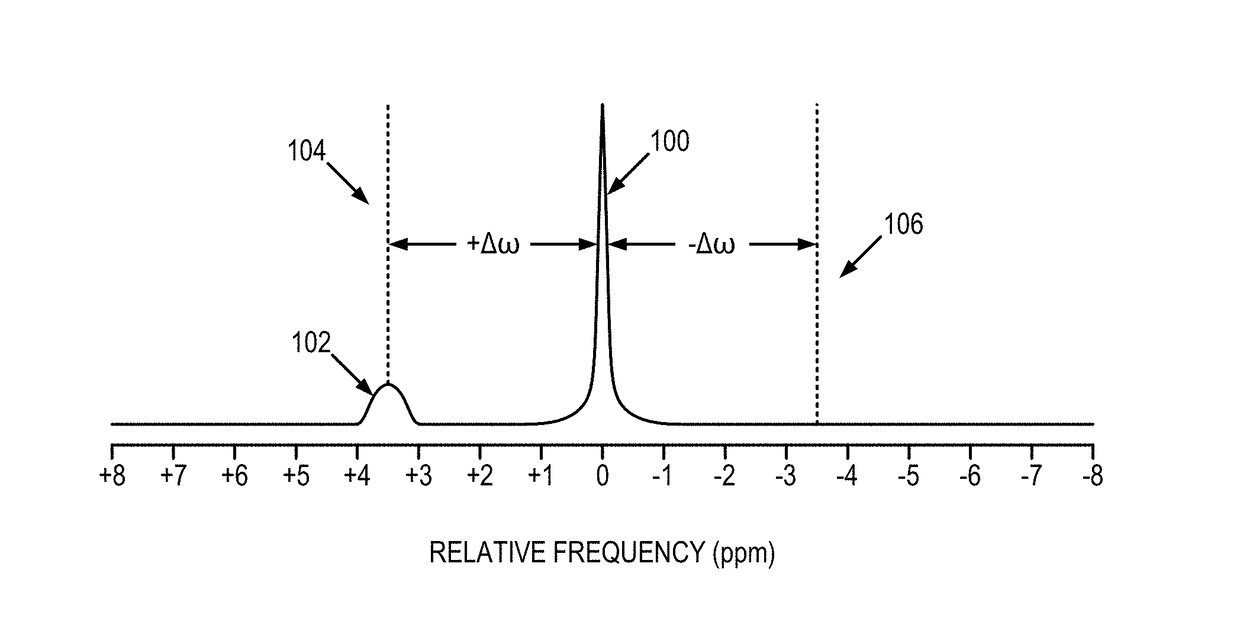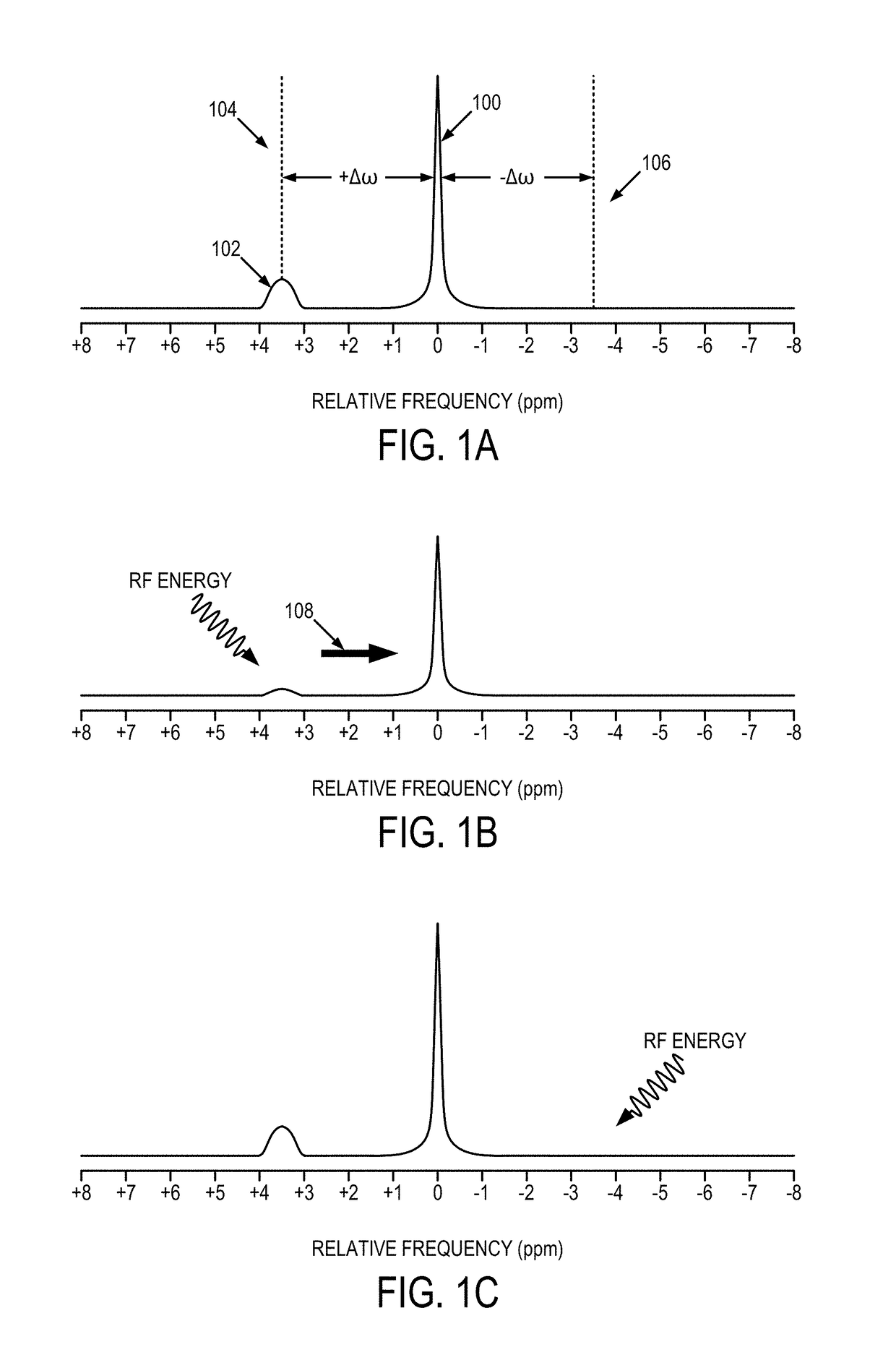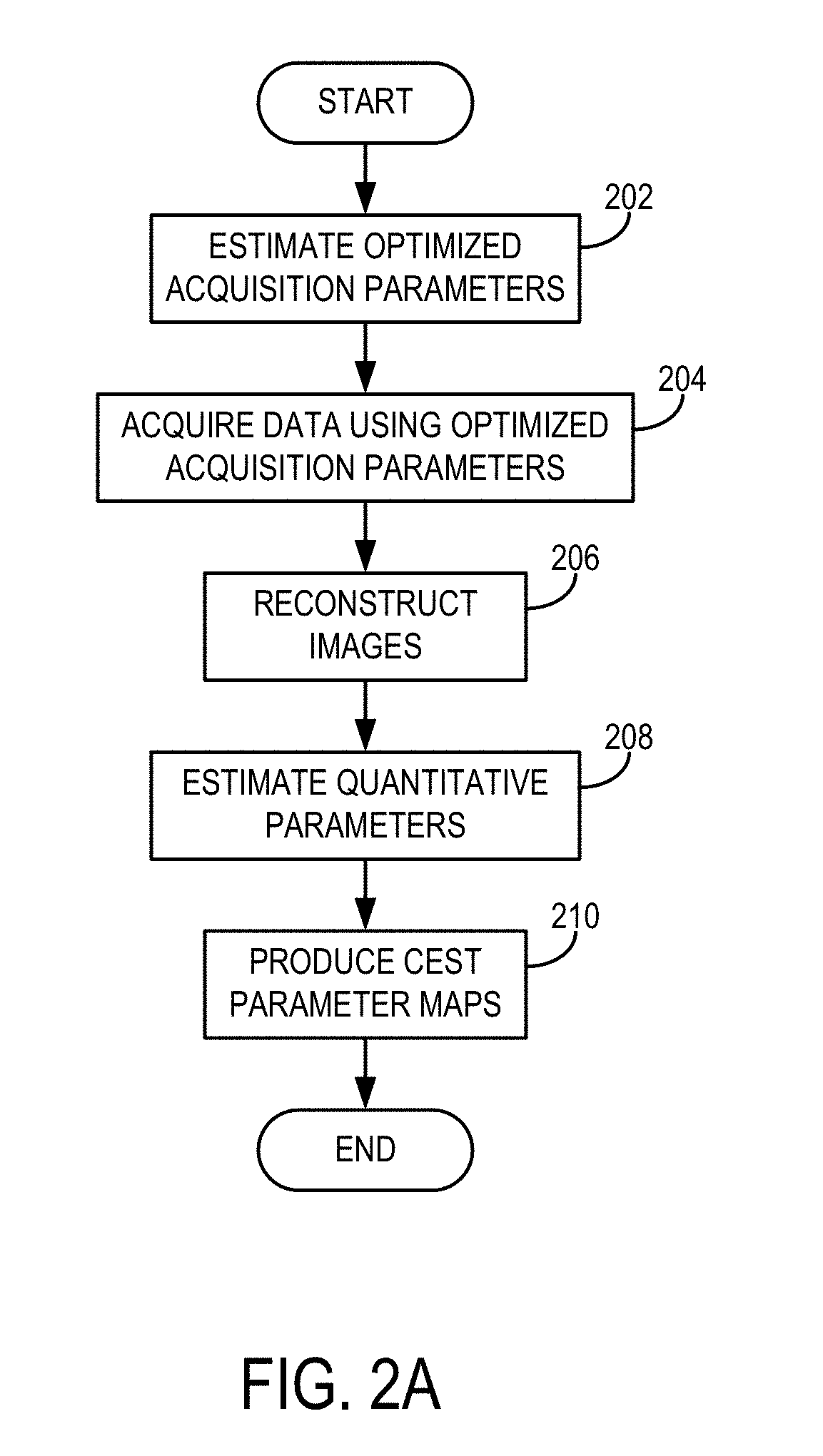System and method for chemical exchange saturation transfer (CEST) magnetic resonance fingerprinting
a magnetic resonance fingerprinting and saturation transfer technology, applied in the field of system and method for chemical exchange saturation transfer (cest) magnetic resonance fingerprinting, can solve the problems of long image acquisition time, qualitative nature of cest contrast, and several limitations of cest mri
- Summary
- Abstract
- Description
- Claims
- Application Information
AI Technical Summary
Benefits of technology
Problems solved by technology
Method used
Image
Examples
Embodiment Construction
[0023]As described, measuring the exchange of magnetization between molecules with nuclear magnetic resonance can provide unique information about the chemical and molecular environment of samples or tissues. CEST imaging renders MRI, which usually detects only bulk water signal, sensitive to metabolites and their byproducts, such as glucose and lactate. In particular, the chemical exchange between bulk water and amide protons from endogenous proteins and peptides has been shown to be sensitive to ischemic tissue acidosis, and as a result has given rise to an imaging technique referred to as amide proton transfer (APT) imaging. Since tissue pH decreases in response to abnormal glucose / oxygen metabolism during acute ischemia, pH-sensitive APT imaging may serve as a surrogate metabolic imaging marker for stroke. In that it complements perfusion and diffusion MRI, APT imaging may allow better characterization of penumbra for predicting ischemic tissue outcome in acute stroke. Moreover,...
PUM
 Login to View More
Login to View More Abstract
Description
Claims
Application Information
 Login to View More
Login to View More - R&D
- Intellectual Property
- Life Sciences
- Materials
- Tech Scout
- Unparalleled Data Quality
- Higher Quality Content
- 60% Fewer Hallucinations
Browse by: Latest US Patents, China's latest patents, Technical Efficacy Thesaurus, Application Domain, Technology Topic, Popular Technical Reports.
© 2025 PatSnap. All rights reserved.Legal|Privacy policy|Modern Slavery Act Transparency Statement|Sitemap|About US| Contact US: help@patsnap.com



